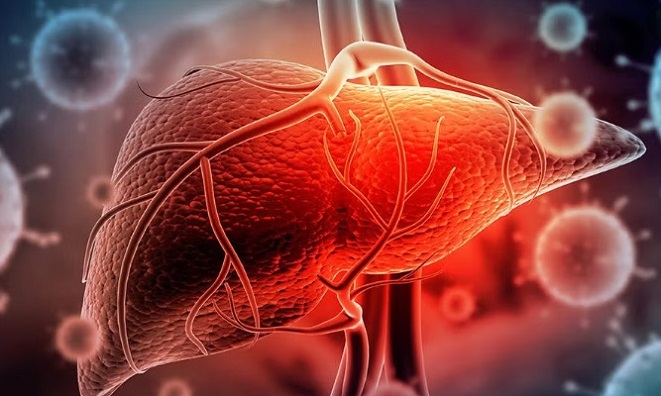SARS-CoV-2 Triggers Liver Cell Death Through Ferroptosis and Mitochondrial Damage
Nikhil Prasad Fact checked by:Thailand Medical News Team Aug 14, 2025 4 months, 2 weeks, 4 days, 23 hours, 15 minutes ago
Medical News: SARS-CoV-2 and the Hidden Threat to the Liver
While COVID-19 is mostly known for attacking the lungs, growing evidence shows that the virus can also harm other organs, including the liver. Researchers from Universidad de Buenos Aires, Consejo de Investigaciones Científicas y Técnicas (CONICET), and Instituto de Investigaciones Biomédicas en Retrovirus y Sida (INBIRS) in Argentina have uncovered how SARS-CoV-2 damages liver cells through a destructive process called ferroptosis—an iron-driven form of cell death—alongside severe mitochondrial stress. This
Medical News report reveals that these findings not only explain why many COVID-19 patients develop liver issues but also open new avenues for treatment.
 SARS-CoV-2 Triggers Liver Cell Death Through Ferroptosis and Mitochondrial Damage
How the Virus Attacks Liver Cells
SARS-CoV-2 Triggers Liver Cell Death Through Ferroptosis and Mitochondrial Damage
How the Virus Attacks Liver Cells
Using a specialized human liver cell model known as Huh7.5, the scientists infected the cells with both the original Wuhan strain and the Omicron BA.5 variant. They found that both variants could efficiently invade and replicate inside these cells. Once inside, the virus disrupted the cells’ mitochondria—the “powerhouses” responsible for energy production—causing them to fragment and release dangerous molecules called mitochondrial reactive oxygen species (mROS). These highly reactive molecules accelerated viral replication and triggered ferroptosis, a form of cell death linked to iron overload and lipid damage.
Key Findings of the Study
The research revealed several striking effects of infection:
-
Variant-specific replication: Omicron BA.5 showed faster early replication, but the original Wuhan strain caused greater cell death at later stages.
-Dual entry receptors: Besides using ACE2, the virus also increased levels of transferrin receptor 1 (TfR1), an iron transport protein that can help the virus enter cells and promote ferroptosis.
-
Lipid droplet buildup: Infected cells accumulated large amounts of fat droplets, which are linked to ferroptotic damage.
-
Multiple death pathways: The virus activated both caspase-dependent mechanisms (apoptosis and pyroptosis) and caspase-independent ferroptosis, with ferroptosis playing the largest role in overall cell destruction.
-Potential treatments: When researchers treated infected cells with antioxidants like mitoTEMPO (which neutralizes mROS) or ferrostatin-1 (which blocks ferroptosis), viral replication dropped by up to 100-fold.
Why This Matters for COVID-19 Patients
These results explain why many COVID-19 patients, even those without pre-existing liver disease, develop abnormal liver function tests. By damaging mitochondria, raising oxidative stress, and disturbing iron an
d fat metabolism, the virus sets off a chain reaction leading to liver injury. Importantly, targeting mitochondrial ROS or ferroptosis could become a powerful way to protect the liver during COVID-19.
The study findings were published in the peer reviewed journal: Frontiers in Cellular and Infection Microbiology
https://www.frontiersin.org/journals/cellular-and-infection-microbiology/articles/10.3389/fcimb.2025.1625928/full
For the latest COVID-19 News, keep on logging to Thailand
Medical News.
Read Also:
https://www.thailandmedical.news/news/covid-19-causes-liver-inflammation-in-children
https://www.thailandmedical.news/news/covid-19-liver-damage-study-uncovers-new-insights-into-long-term-effects
https://www.thailandmedical.news/news/covid-19-induced-long-term-liver-injury-uncovered-by-ultrasound-technology
